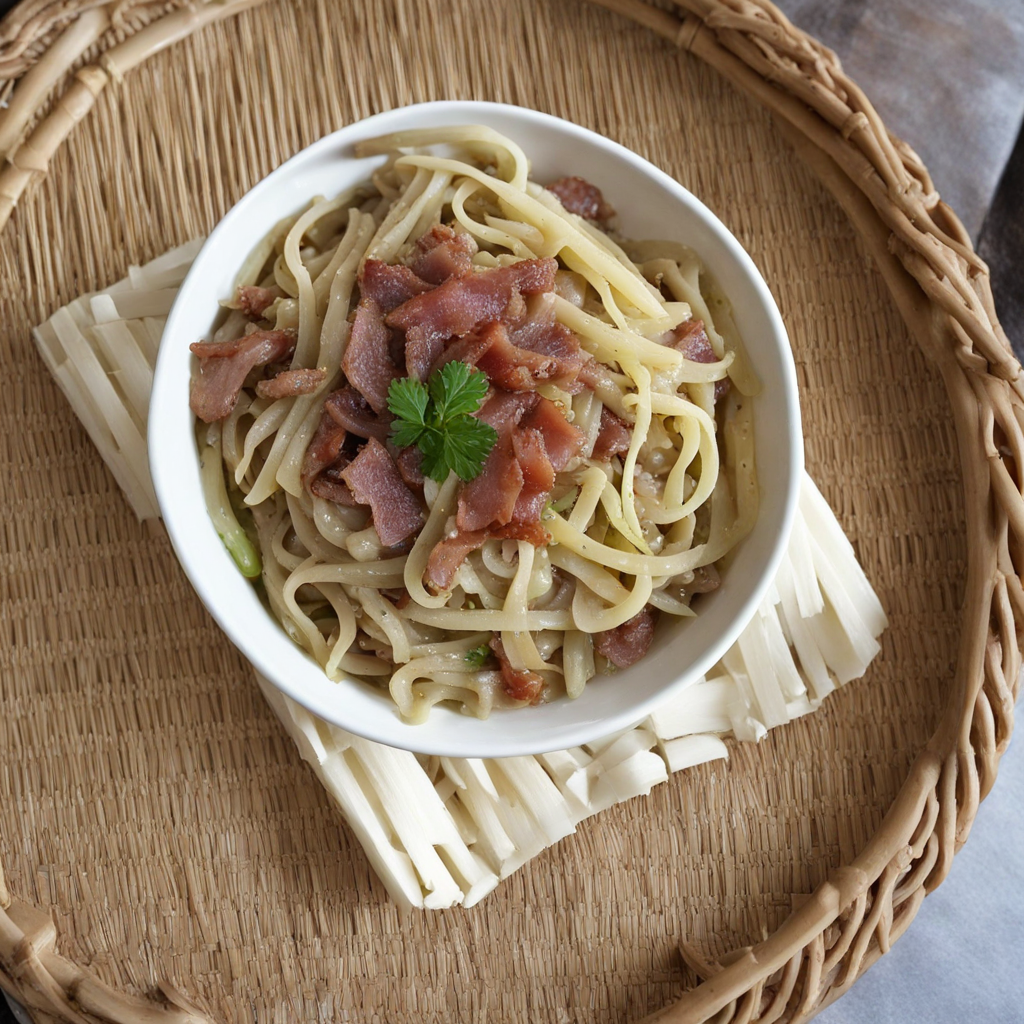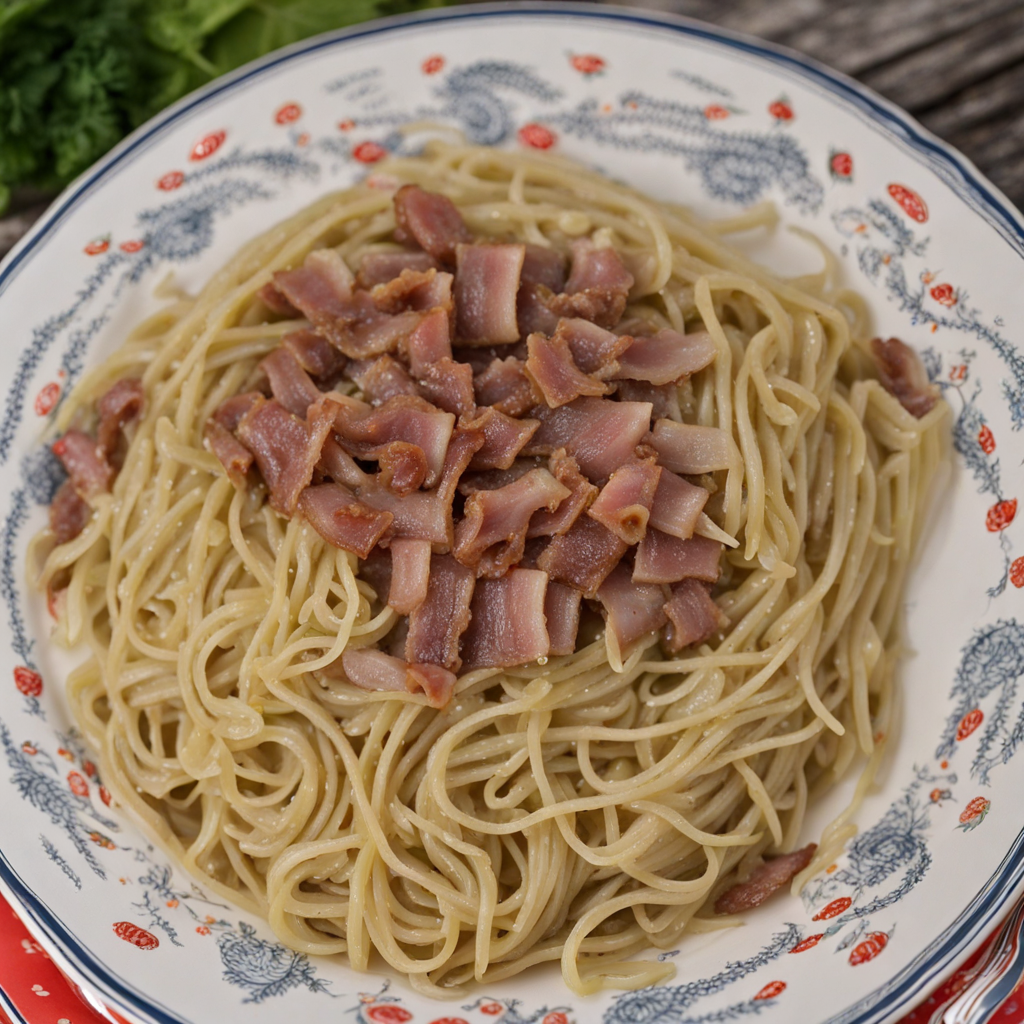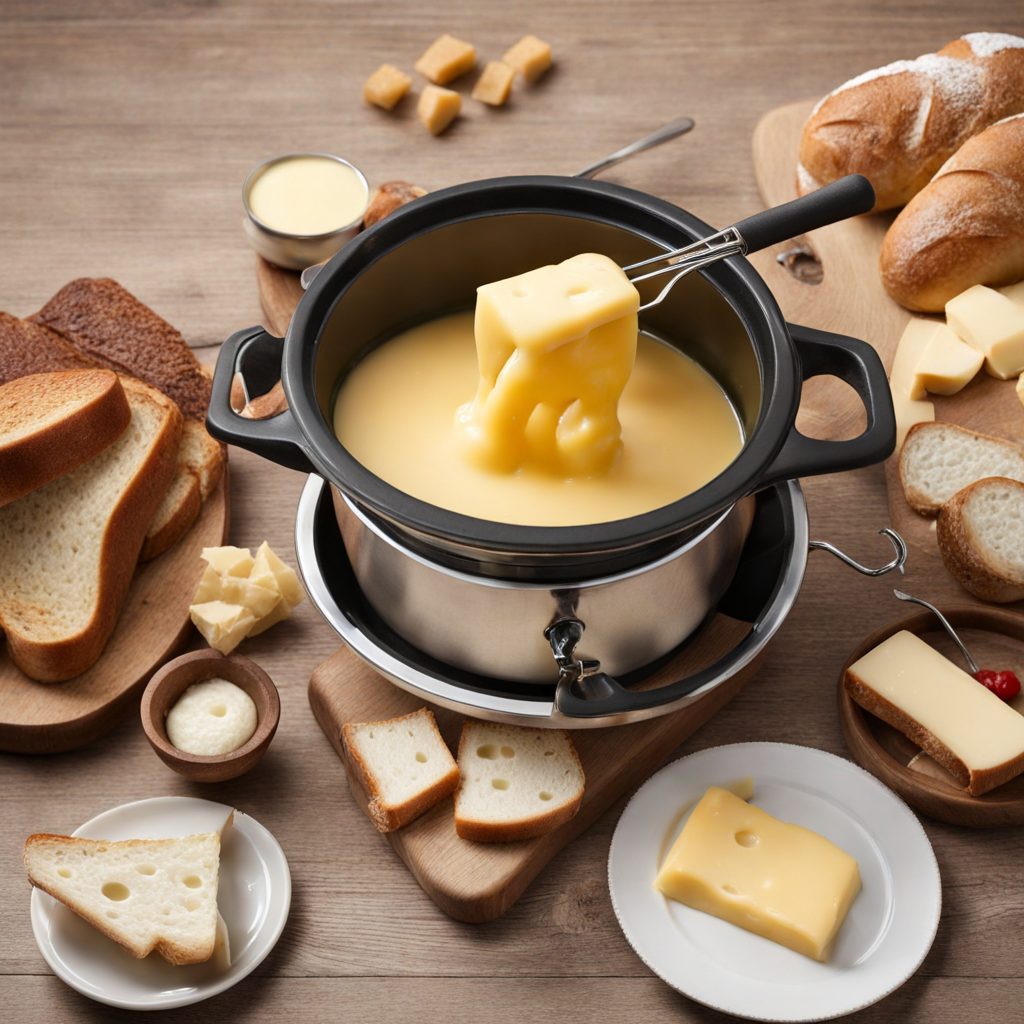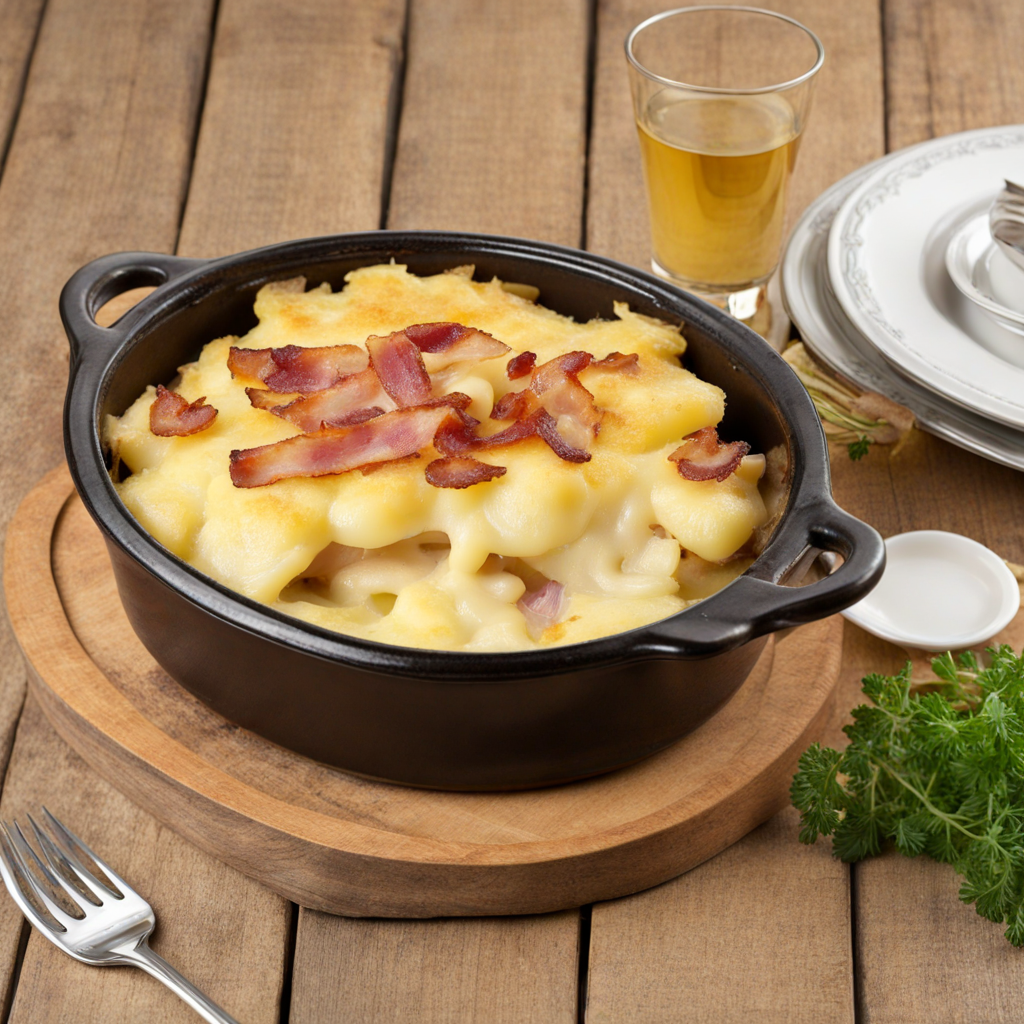Pizokel
Pizokel is a delightful Swiss dish that combines the rustic charm of alpine cooking with a hearty, comforting flavor profile. Originating from the mountainous regions of Switzerland, this dish is a type of dumpling made primarily from flour, potatoes, and sometimes eggs. The dough is typically rolled out and cut into small, thick shapes, resembling a cross between a noodle and a gnocchi. When cooked, Pizokel develops a slightly chewy texture that contrasts beautifully with the tender potatoes, making each bite satisfying and full of character. Traditionally, Pizokel is served in a rich broth or sautéed with buttery onions and served alongside various accompaniments such as seasonal vegetables, cheese, or meats like speck or cured ham. The simplicity of the ingredients allows the natural flavors to shine through, and the dish is often enhanced with fresh herbs like chives or parsley, adding a burst of color and freshness. This hearty dish is not just a meal; it embodies the essence of Swiss comfort food, perfect for warming up on a chilly evening. For those looking to explore new culinary experiences, Pizokel offers a unique taste of Switzerland's mountain culture. The combination of ingredients is both wholesome and fulfilling, making it an ideal choice for anyone eager to try something that feels both traditional and innovative. Whether enjoyed in a rustic mountain chalet or at a local Swiss restaurant, Pizokel is a dish that promises to leave a lasting impression on your palate and inspire a deeper appreciation for Swiss gastronomy.
How It Became This Dish
Pizokel: A Culinary Journey Through Swiss Heritage Pizokel, a dish that embodies the rustic charm of Swiss cuisine, particularly hails from the mountainous regions of the country. This hearty, noodle-like dish is made from a simple mixture of flour, water, and eggs, often seasoned with salt. Its origins can be traced back to the Alpine traditions of the 19th century, where it served as a staple for rural communities. Origins and Historical Context The name "Pizokel" is believed to have derived from the dialect of the local Romansh language, particularly from the term "pizok," which refers to small bits or pieces. Traditionally, Pizokel was made by mixing flour with water and eggs to create a thick dough. The dough was then rolled out and cut into small, irregular shapes, which were boiled or steamed. This method of preparation reflects the resourcefulness of Swiss peasants who relied on readily available ingredients to create nourishing meals. Historically, Pizokel is associated with the region of Graubünden, where the harsh climate and rugged terrain made agriculture challenging. The dish became a vital food source, providing the necessary sustenance for laborers and farmers. The simple ingredients used in Pizokel allowed families to stretch their resources, making it an economical choice during the long winter months when fresh produce was scarce. Cultural Significance Pizokel is more than just a dish; it represents the essence of Swiss culinary heritage. Its preparation is often a communal activity, with families gathering to make the dough and cut the pieces together. This communal aspect highlights the importance of food in Swiss culture, where meals are often shared with family and friends. Pizokel is typically served with a variety of toppings, such as sautéed onions, cheese, or even a hearty meat sauce, making it a versatile dish that can accommodate various tastes. In the context of Swiss festivals and celebrations, Pizokel holds a special place. It is often prepared during traditional feasts and gatherings, serving as a reminder of the country’s agrarian roots. The dish is particularly popular in the autumn months, coinciding with the harvest season when communities come together to celebrate the bounty of the land. Evolution Over Time As Swiss society evolved, so did the preparation and presentation of Pizokel. In the early 20th century, with the industrialization of food production, many traditional recipes began to adapt to modern cooking methods. While the core ingredients remained the same, convenience took precedence, and pre-packaged versions of Pizokel became available in grocery stores, catering to a more urban population. The rise of globalization and the growing interest in authentic, artisanal foods has led to a resurgence in traditional recipes, including Pizokel. In recent years, many chefs have sought to revive this classic dish, experimenting with various ingredients and flavors while maintaining its rustic charm. Today, one can find Pizokel served in both humble taverns and upscale restaurants across Switzerland, showcasing its versatility and enduring appeal. Modern Interpretations Modern interpretations of Pizokel often reflect a fusion of traditional and contemporary culinary trends. Chefs have begun to incorporate local ingredients such as wild herbs, mushrooms, and seasonal vegetables into the dish, elevating it to new heights. Additionally, variations of Pizokel are found in other regions of Switzerland, each with its unique twist. For instance, in the Valais region, Pizokel might be served alongside a rich cheese sauce, while in the Bernese Oberland, it may be combined with game meats. The rise of food tourism has also contributed to the popularity of Pizokel. Travelers seeking authentic Swiss culinary experiences often seek out local dishes, and Pizokel offers a taste of the country’s rural heritage. Cooking classes and food tours centered on traditional Swiss cuisine often highlight Pizokel, promoting not only its preparation but also the cultural stories and traditions that accompany it. Conclusion Pizokel is a testament to Switzerland's rich culinary history, representing the adaptability and resilience of its people. From its humble origins in the Alpine valleys to its modern interpretations in gourmet restaurants, Pizokel continues to be a cherished dish that connects generations. It embodies the spirit of Swiss culture, where food is celebrated not just for sustenance, but as a means of bringing people together. As Switzerland continues to navigate the complexities of modern life, Pizokel serves as a reminder of the importance of tradition, community, and the simple pleasures of sharing a meal. Whether enjoyed in a rustic mountain hut or a chic urban eatery, Pizokel remains a beloved symbol of Swiss heritage, inviting all to savor its rich history and delightful flavors. In a world increasingly focused on fast food and convenience, Pizokel stands out as a dish that encourages us to slow down and appreciate the art of cooking—a true embodiment of Switzerland’s culinary soul.
You may like
Discover local flavors from Switzerland







